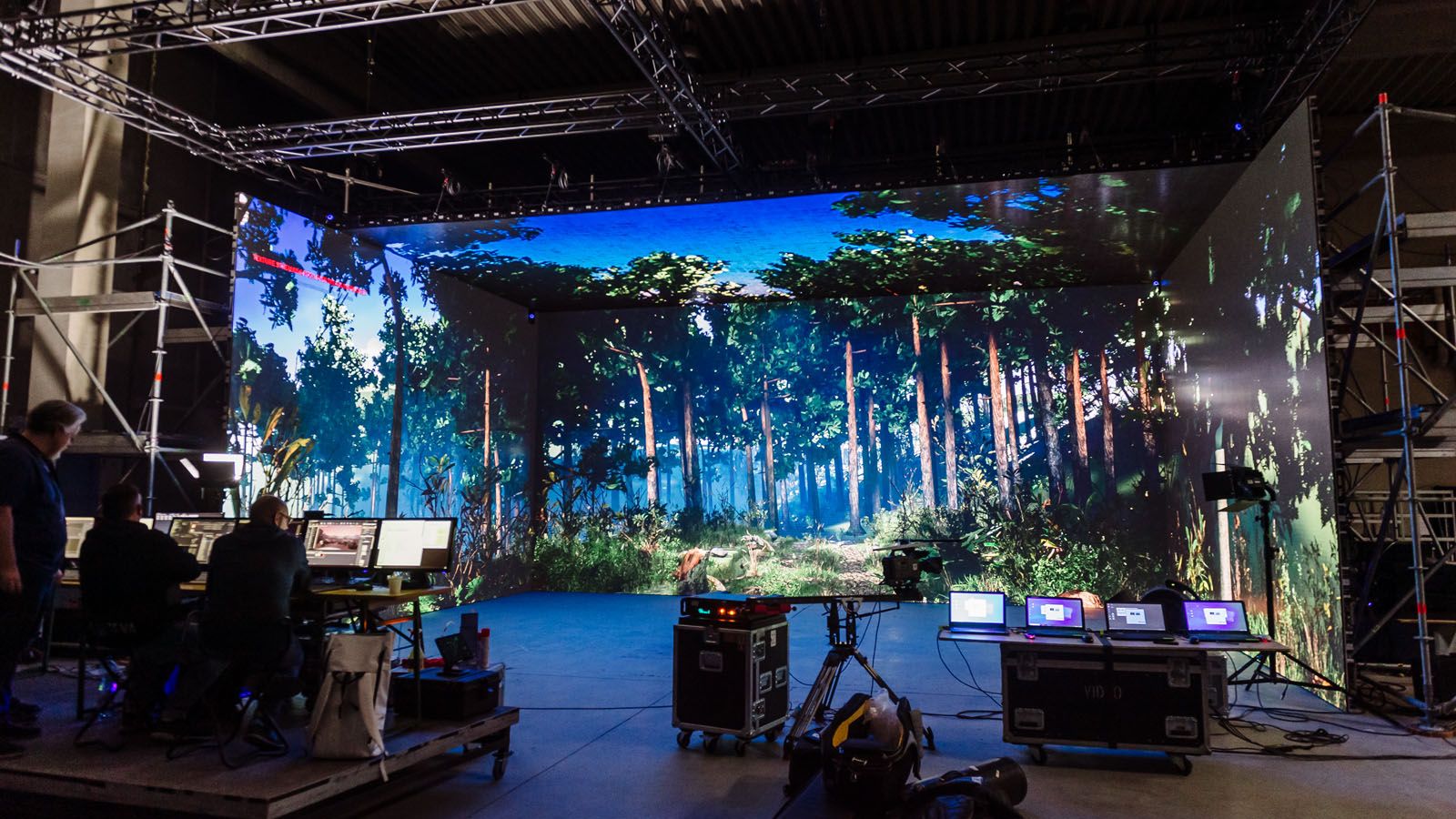
Virtual Production: Where The Physical World Meets The Virtual
The complex scenes that we see on the screen that can’t be filmed in the real world, are mostly a creation of visual effects. Every person on this planet who watches movies, or dramas, or animes is well aware of what VFX is, but very few of them know that there are so many types of visual effects used in production. From CGI to matchmoving, every technique of visual effects is phenomenal. There is one more technology being used in VFX production that is virtual production. It refers to a technique that allows filmmakers to layout and establishes a film in a digital environment before going on a physical set. It is an emerging method that uses a suite of software tools to combine live-action footage and computer graphics in real-time. Filmmakers and contributors across multiple locations can deliver feedback across digital or physical environments where cast members are physically working on the set.
How does it work?
The virtual production technique uses a combination of mesmerizing technologies that involve both virtual and augmented reality as well as CGI and game-engine technologies. Advanced game engine and graphics capabilities have opened the tantalising prospect of modifying the background in real-time as the camera is moved, to create much greater realism and a sense of perspective. Of course, this requires another key technology – camera tracking – which can accurately capture the exact position of the camera as it is moved or panned around the virtual set. This technology can be combined with a green screen, but it has really come of age with the advent of high resolution LED displays. It’s in no small part down to the innovative use of these displays on TV shows like the Mandalorian that the world of film and television is taking such a huge interest in this new workflow, and increasingly choosing to use LED screens for virtual production.
Types of Virtual Production
Virtual production itself is a broad term that involves a spectrum of computer-aided production and visualization film making methods. There are some categories of virtual production tools with each having its own subsets of tools and methodologies. The underlying thread that connects these tools is the gaming engines used to operate them and the ability to render them in real-time. Each of these technologies provides certain benefits and abilities at each stage.
- Visualisation
It employs prototype imagery to convey the creative intent of a shot or sequence. Visualization manifests itself through a variety of steps, including pitch visualisation, pre-visualisation, virtual scouting, tech visualisation, stunt visualisation, and post visualisation.
- Performance capture
It involves the use of markers to help capture subtle facial expressions and body movements in a live-action environment. This technique is called simulcam and is often used when virtual characters need to interact in live-action. The main subsets of performance capture are motion capture, facial capture, and full-body animation.
- Live LED Wall
A live LED wall is virtual production in its purest form. Image output is created with real-time rendering engines and projected onto a screen behind a physical set lighting and imagery can be adjusted on a whim, the final-pixel imagery obtains a level of photorealism that can be captured on camera, and expensive on-location shoots are not required. As cameras move, the perspective and lighting projected onto the LED wall shifts in relation to the camera’s position
Like there are varieties of techniques in virtual production, there are some benefits also –
- Cost-effective
Cost-effectiveness can be one of the biggest bliss in production work. Virtual production is beneficial as it is budget-friendly. All the work can be done on the sets and you don’t need to go out in a real location or to create a location using props. Everything occurs in a controlled environment, no need to change the lighting or weather, or any external factor that may affect the shoot.
- Creativity
It removes the limits for imaginations. You can create any creature or any situation you fantasize about. It erases the boundaries for creativity.
- Time saver
You don’t need to go outdoors on a location, with your crew to shoot a single scene for your film. It automatically saves the time of everyone related to the production.
- Efficient
Not only does virtual production save time and money during the filming process, but these conveniences also translate to the post-production process. Unlike shooting with a green screen, the “effects” in a mixed reality production are captured in real-time and do not have to be created in the editing process, making it the most efficient form of production.
- Safe
It is way safer than shooting outdoors in live locations and stunting. since virtual productions require fewer crew and occur in controlled environments.
The VFX industry is evolving at a rapid rate, it is little by little reducing the lines between reality and the virtual world. With more such VFX-rich content being rolled out, not just movies but also other platforms are utilizing it to reach the world audience. Therefore, today’s media and entertainment industry are enhanced or one can say overloaded with the amazing VFX technologies that can bring almost anything to life.


